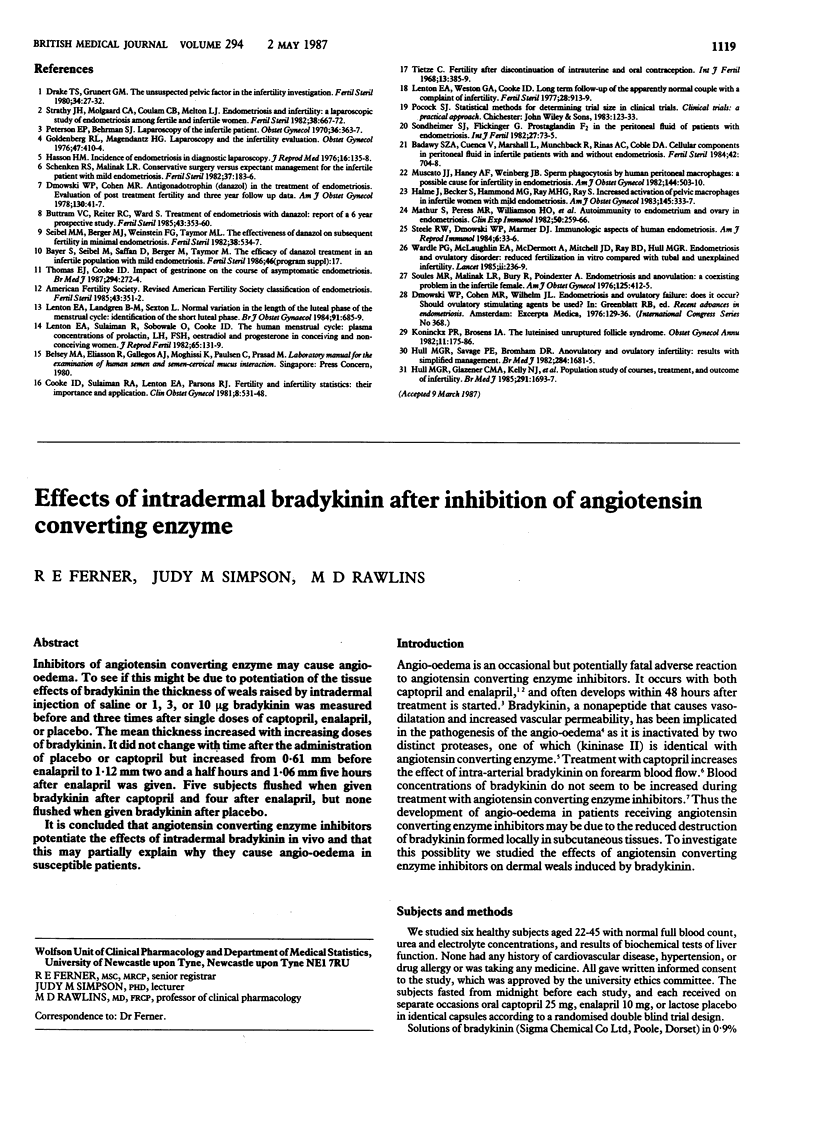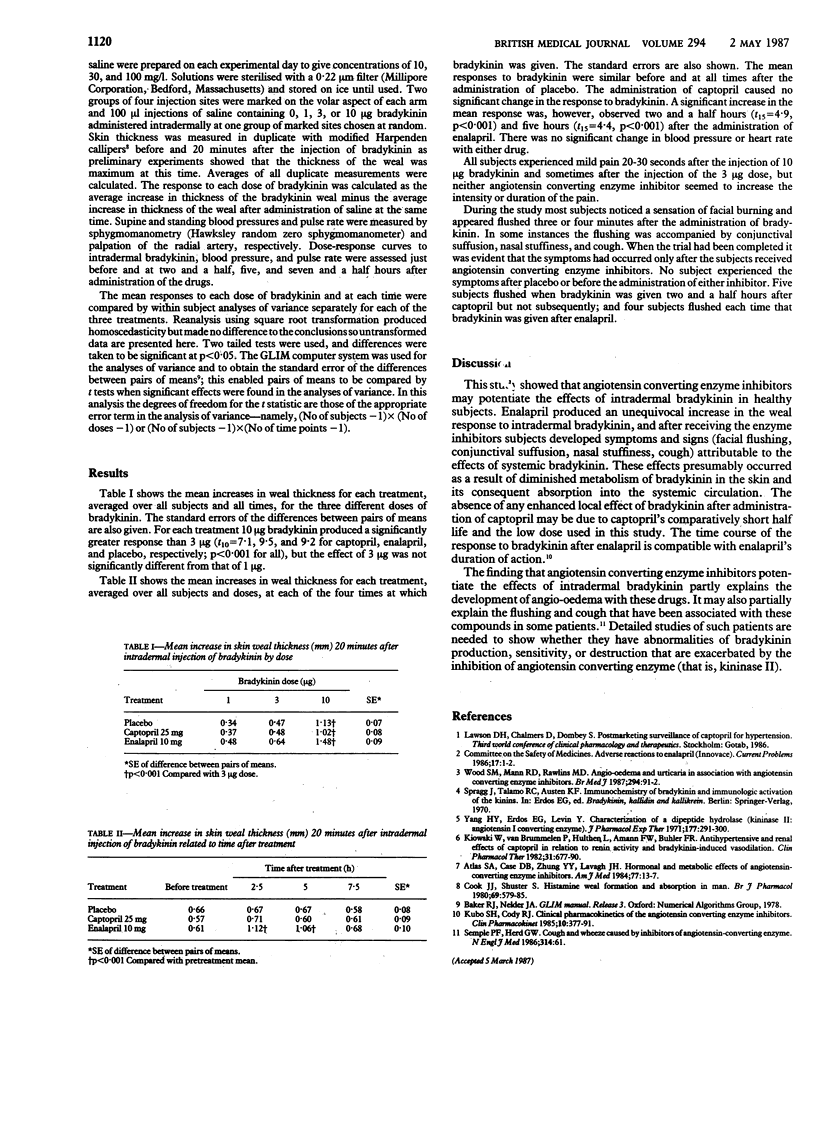Abstract
Inhibitors of angiotensin converting enzyme may cause angio-oedema. To see if this might be due to potentiation of the tissue effects of bradykinin the thickness of weals raised by intradermal injection of saline or 1, 3, or 10 micrograms bradykinin was measured before and three times after single doses of captopril, enalapril, or placebo. The mean thickness increased with increasing doses of bradykinin. It did not change with time after the administration of placebo or captopril but increased from 0.61 mm before enalapril to 1.12 mm two and a half hours and 1.06 mm five hours after enalapril was given. Five subjects flushed when given bradykinin after captopril and four after enalapril, but none flushed when given bradykinin after placebo. It is concluded that angiotensin converting enzyme inhibitors potentiate the effects of intradermal bradykinin in vivo and that this may partially explain why they cause angio-oedema in susceptible patients.
Full text
PDF

Selected References
These references are in PubMed. This may not be the complete list of references from this article.
- Cook J., Shuster S. Histamine weal formation and absorption in man. Br J Pharmacol. 1980 Aug;69(4):579–585. doi: 10.1111/j.1476-5381.1980.tb07907.x. [DOI] [PMC free article] [PubMed] [Google Scholar]
- Kiowski W., van Brummelen P., Hulthén L., Amann F. W., Bühler F. R. Antihypertensive and renal effects of captopril in relation to renin activity and bradykinin-induced vasodilation. Clin Pharmacol Ther. 1982 Jun;31(6):677–684. doi: 10.1038/clpt.1982.95. [DOI] [PubMed] [Google Scholar]
- Kubo S. H., Cody R. J. Clinical pharmacokinetics of the angiotensin converting enzyme inhibitors. A review. Clin Pharmacokinet. 1985 Sep-Oct;10(5):377–391. doi: 10.2165/00003088-198510050-00001. [DOI] [PubMed] [Google Scholar]
- Semple P. F., Herd G. W. Cough and wheeze caused by inhibitors of angiotensin-converting enzyme. N Engl J Med. 1986 Jan 2;314(1):61–61. doi: 10.1056/NEJM198601023140119. [DOI] [PubMed] [Google Scholar]
- Wood S. M., Mann R. D., Rawlins M. D. Angio-oedema and urticaria associated with angiotensin converting enzyme inhibitors. Br Med J (Clin Res Ed) 1987 Jan 10;294(6564):91–92. doi: 10.1136/bmj.294.6564.91. [DOI] [PMC free article] [PubMed] [Google Scholar]
- Yang H. Y., Erdös E. G., Levin Y. Characterization of a dipeptide hydrolase (kininase II: angiotensin I converting enzyme). J Pharmacol Exp Ther. 1971 Apr;177(1):291–300. [PubMed] [Google Scholar]


